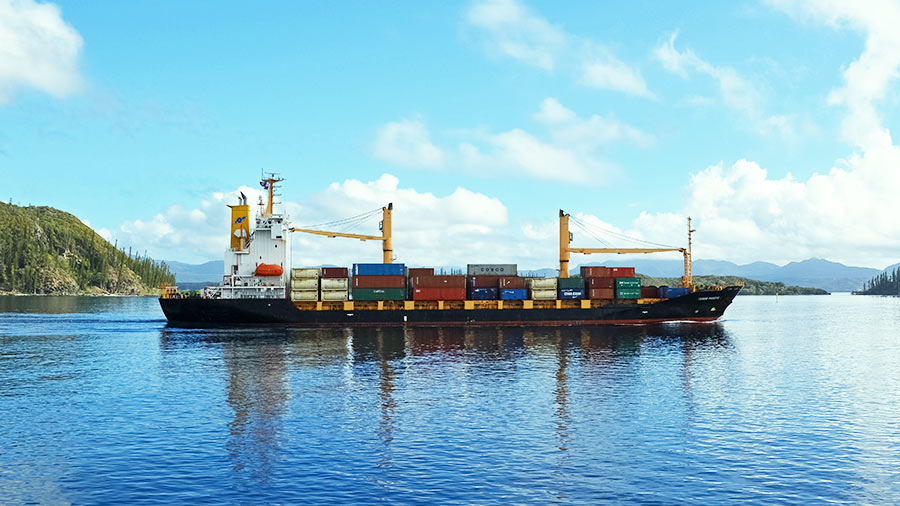India’s tourism market is set to be worth US$125 billion by FY 2026-27 due to improved infrastructure, more global connectivity, higher disposable incomes, and the development of niche tourism products. These open up opportunities for foreign investors, who will benefit from the increased spending plans by central and state governments for their respective culture and heritage industries and the ecological preservation and development of natural landscapes. Besides, India is also actively seeking to improve its attractiveness as a destination for specialized tourism, such as for healthcare, business facilitation, and conferences, exhibitions, and conventions, among others.
India’s tourism market is projected to touch the US$125 billion mark by FY 2026-27 on the back of expanding airport infrastructure and easier access to securing passports, combined with strong underlying pent-up domestic demand.
The country’s travel industry, worth about US$75 billion in FY 2019-20, was among the hardest hit by the COVID-19 pandemic as all public movement was restricted or stopped. However, with the outbreaks easing, the global travel industry’s post-pandemic recovery has continued to gather pace, and Indian tourists too are starting to travel within the country and abroad, in large numbers.
In fact, India’s international tourist arrivals are expected to reach 30.5 million by 2028. India’s tourism market is a significant economic multiplier due to its sector linkage to multiple service industries and the spillover for increased retail consumption.
India’s tourism market: An overview
India is the eighth largest country in terms of contribution to travel and tourism GDP, and tourism is an important source of foreign exchange in India like many other countries. It is expected to be among the top 10 fastest growing destinations for leisure-travel spending during the period 2016-2026.
The travel agency business in the country is dominated by micro, small, and medium enterprises (MSMEs), with nearly 300,000 travel agent businesses catering to holidaymakers, representing the largest volumes of business in bookings at about 52 percent of the travel market. These are scattered across categories of service providers, such as travel packages, cab, and bus booking companies. This segment is further expected to reach US$65 billion by 2027.
The Indian airline travel market was estimated to be worth US$20 billion in 2019 and is projected to double in size by FY2027 due to improving airport infrastructure and growing access to passports.
India’s overall passenger traffic (both domestic and international) at airports reached 93 percent of pre-COVID levels in May 2022. International passenger traffic reached 63 percent and 72 percent of pre-COVID levels in April and May, respectively. Recovery of domestic travel reached 98 percent of pre-COVID levels in May 2022.
Meanwhile, among niche segments, medical tourism in India is estimated to reach US$13 billion by the end of 2022. India was ranked 10th out of the top 46 countries in the world in the Medical Tourism Index 2020-21 by the Medical Tourism Association.
Investment prospects
India is the seventh largest country in the world with an area of 3.3 million sq. km. offering geographical diversity, attractive beaches, 40 Unesco World Heritage sites, 10 bio-geographic zones, 105 national parks, and 564 wildlife sanctuaries.
The country’s tourism sector’s direct contribution to the GDP is expected to record an annual growth rate of 10.35 percent between 2019 and 2028.The country ranked 10th according to the World Travel Tourism Council (WTTC) among 185 countries in terms of travel and tourism’s total contribution to GDP in 2019.
India moved to 34th place in 2019 on the Travel & Tourism Competitiveness Index from ranking 65th in 2013.
The country’s tourism sector is now at the cusp of entering the top five business travel markets segment in coming years, with an estimated growth of US$ 492.21 billion by 2028, contributing US$512 billion to India's GDP and creating 53 million jobs by 2029.
Tourism was the third largest foreign exchange earner in India till the pre-pandemic year 2019, and the Indian tourism and hospitality sector emerged as one of the key service sectors driving growth.
Now, after a prolonged period of mobility restrictions to fight the pandemic, India’s domestic tourism is once again picking up pace in 2022, recording increased travel by air and rail, higher hotel occupancy rates, and popular tourist destinations seeing rising footfall.
Key growth drivers
- Economic growth: India continues to remain the fastest growing economy with a projected growth of about 6.4 percent in 2022, leading to higher standards of living of the population and an increased ability to spend on leisure activities.
- FDI regulation: Access to India’s tourism market is highly liberalized. 100 percent FDI is allowed in the tourism sector under the automatic route; and 100 percent FDI is allowed in tourism construction projects, including the development of hotels, resorts, and recreational facilities.
- Government initiatives: Enabling government and regulatory initiatives like an additional outlay of US$ 316.3 million being earmarked for the Ministry of Tourism in the 2022-23 Union Budget will support tourism-linked businesses in the country.
- Rising disposable income and growing middle class: A gradual rise in the number of dual income families is leading to higher disposable income (total personal disposable income increased to US$238.5 million in 2021 from US$199.68 million in the previous year), which will support increased household spending for leisure and recreational purposes. The rising middle class has also supported the growth of domestic and outbound tourism.
- Demographic dividend: More than 60 percent of the Indian population is in the working cohort – aged 15-64 years – and have relatively higher spending capacity.
- Ease of booking services: This has been facilitated by improving internet access, smartphone penetration, and expanding e-commerce segments. For example, India is one of the most digitally advanced traveler countries – in terms of digital tools used for planning, booking, and experiencing a journey.
- Geographic and cultural diversity: India's tangibly rich cultural, historical, and religious heritage and diverse natural landscapes, ecology, and terrain offer huge potential for the development of the travel, tourism, and hospitality industries.
- Varied tourism products: The country has a diverse portfolio of niche tourism products, including development and operation of cruises, adventure tourism, medical and wellness, MICE (meetings, incentives, conferencing, exhibitions), eco-tourism and sustainable tourism, and religious tourism.
- There are opportunities across various sub-segments, such as timeshare resorts, convention centers, motels, hotels, and serviced residences, and heritage hotels.
- India’s natural and architectural heritage alone creates scope for new modes of the tourist experience – such as by combining technology with cultural experience, traditional medicine and wellness with exploring natural landscapes, or adventure activities in biodiversity parks.
- The size of the country and its population also creates capacity for localized products that can be priced anywhere from the competitive to premium range.
- Emerging trends in the workspace, such as hybrid office arrangements and flexible work-from-anywhere policies, could boost dependent sectors in tourist hubs around major metropolitan centers.
Growth of specialized medicine, super specialty hospitals, and healthcare hubs across the country, especially in the well-connected metropolitan cities and their surrounding suburbs (such as the Delhi National Capital Region, Hyderabad, Bangalore, and Mumbai), have attracted a steady pipeline of medical tourists coming to India for world-class and relatively affordable care.
- Improving health facilities: The presence of NABH and JCI-accredited world-class and super specialty hospitals and skilled medical professionals make India a preferred destination for medical tourists, especially from the Middle East and the African continent. The medical tourism sector in India is predicted to increase at a CAGR of 21.1 percent during 2020-27 as per IBEF.
Foreign investments
India was globally the third largest recipient of investment directed to the travel and tourism industries, benefiting from an inflow of US$45.7 billion in 2018, accounting for 5.9 percent of the total investment in the country. The country’s hotel and tourism sector received a cumulative FDI inflow of US$15.89 billion between April 2000 and June 2021.
While this trend fell through due to the intervening pandemic years, it is expected to bounce back given the size of India’s market. For example, India is expected to emerge with a market size of 1.2 million cruise visitors by 2030-31, due to supporting initiatives like the infrastructure development of ports, acquisition of ferries, development of river cruise circuits, etc.
Hotel brand and management firm Dream Hotel Group announced plans in 2021 to invest around US$300 million in the next 3-5 years for the development of the cruise sector in India.
Reasons why India needs foreign capital for capacity building in the tourism sector
- Macroeconomic goals: Further improvements in the tourism sector can position it as an important channel for generating jobs, bridging infrastructure deficit, and addressing the decline in the Indian tourism sector.
- Curated travel experiences: Building travel experiences out of the already present attractions and tourism sites is what should be focused on, which could include activities for the children, culinary tours, interactivity for the tourist with the culture of the place, etc.
- Ancillary services: Development of supplementary facilities, which could contribute to growth of tourism like car rentals, coach services, financial services, etc.
- Medical tourism facilitators: With an increasing focus on medical tourism and related activities, there is need for more facilitators in this space to give a boost to medical tourism.
- Facilitators connect individual consumers, businesses, insurance carriers and agents, and third-party administrators to affordable and innovative medical travel options.
- While several U.S- and Southeast Asia-based facilitators operate in the Indian medical tourism market, there is need for more domestic companies in the segment. Influx of foreign investment will provide the liquidity needed.
- Rural tourism: India being an agrarian economy, there is huge potential for rural and agricultural tourism to flourish. However, a lack of facilitators in this segment makes it unorganized and difficult to scale and generate revenue.
- Technological advancements: Technologies like augmented reality (AR), virtual reality (VR) and even voice-based tools have an immense potential to redefine how travelers choose to experience a trip. Onsite, the access to information displayed in an intuitive manner via audiovisual tools can enhance the customer experience. In addition, artificial intelligence and machine learning are helping travel companies offer personalized suggestions. The more an experience is tailored to a customer’s requirements and expectations, the more likely they will use the same service again.
- Promotion and marketing: Although marketing related to India’s tourism sector is increasing, there remains a lot of scope for improvement, which can be tapped. This may even be linked to the growing Indian social media influencer market and online creator economy.
Government policy support and schemes for India’s tourism sector
- India has resumed scheduled commercial international passenger services to/from India starting March 27, 2022, following a delay (November 2021 to March 2022) due to the Omicron outbreak. This will support the rebound in inbound tourism.
- The total budgetary allocation by the government for FY 2022-23 towards the Ministry of Tourism is US$24 billion.
- Introduction of the scheme to boost the tourism sector by providing one-month free tourist visa to 500,000 tourists until March 31, 2022. E-Visa facility extended to 156 countries till date.
- Support for regional tourism by making it more attractive for neighboring South Asian tourists to travel to India.
- Fast-track infrastructure development like 35 logistics parks, setting up special purpose vehicles for the Delhi-Mumbai corridor project worth more than US$ 12.8 billion, Amritsar-Ajmer highway project worth US$ 4.5 billion, etc. In fact, more than 50 percent of the tourism ministry’s planned spending is demarcated for the development of tourism infrastructure at tourist destinations and circuits in the states and union territories (UTs).
- During 2019-20, an additional fund worth US$269.22 million was sanctioned for new projects under the Swadesh Darshan (See your own country) scheme. One of the objectives of the scheme is to develop theme-based tourist circuits on the principles of high tourist value, competitiveness, and sustainability in an integrated manner.
- The Ministry of Tourism has sanctioned 18 projects covering all the north-eastern states worth US$211.35 million to develop and promote tourism in the region under the Swadesh Darshan (see your own country India) and PRASHAD schemes (Pilgrimage Rejuvenation and Spiritual Augmentation Drive).
- Destinations associated with nationalism tourism like the world’s tallest statue ‘Statue of Unity’ are following in the footsteps of historical sites as a new area of interest for domestic tourists.
- As India’s rural economy accounts for 46 percent of the national income, rural tourism is being promoted by the Incredible India 2.0 Campaign. Any form of tourism that showcases rural life, art, culture, and heritage at rural locations, will benefit the local community economically and socially as well as enable interaction between tourists and locals. See here for India’s National Strategy and Roadmap for Development of Rural Tourism India – An Initiative Towards Atmanirbhar Bharat.









